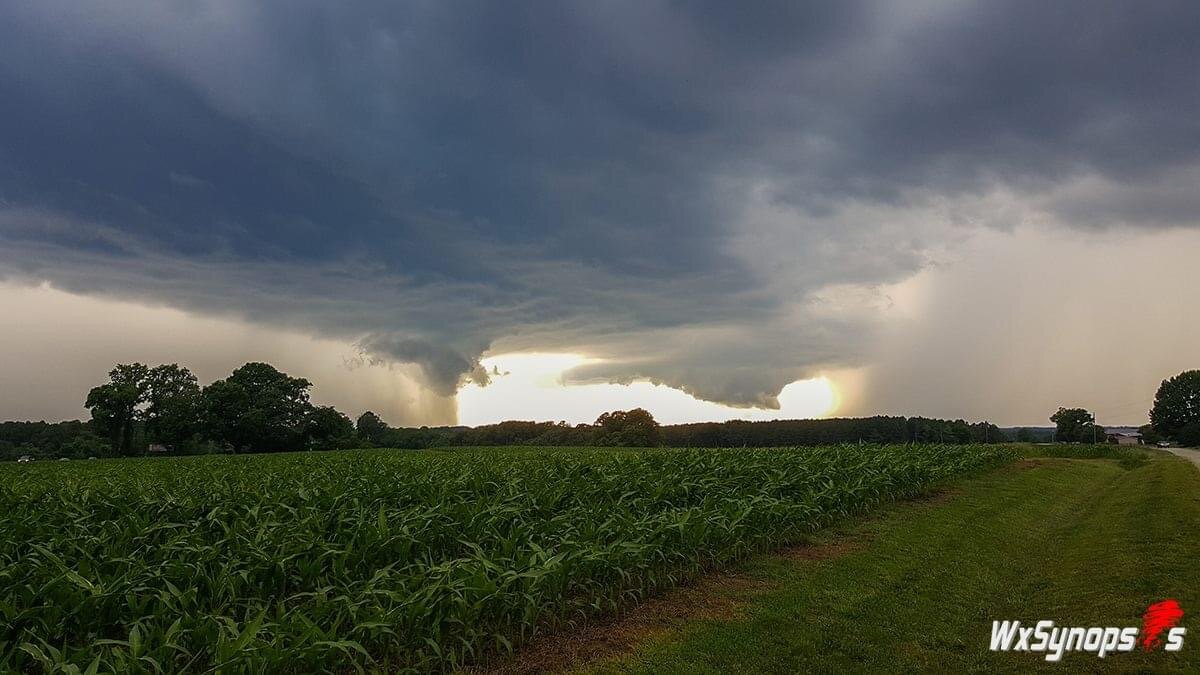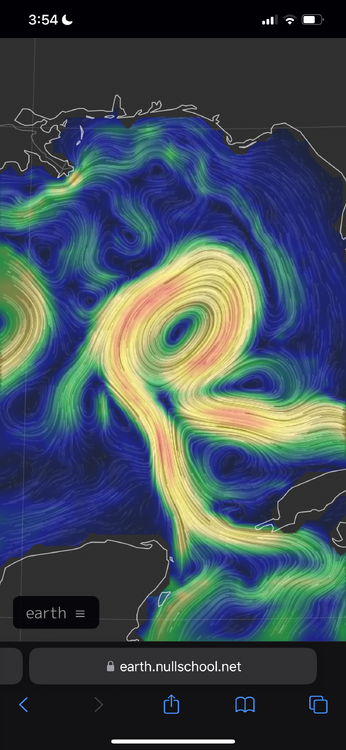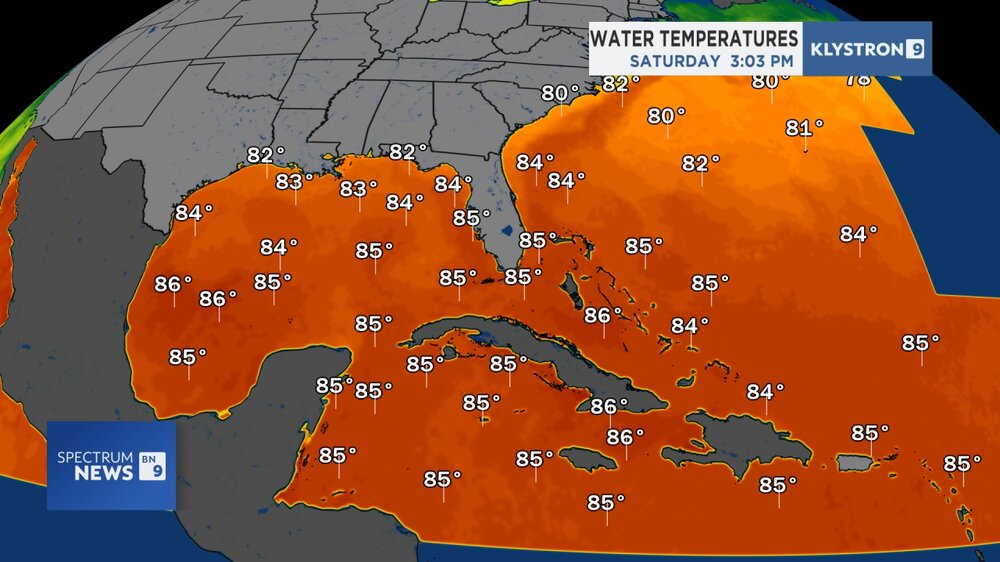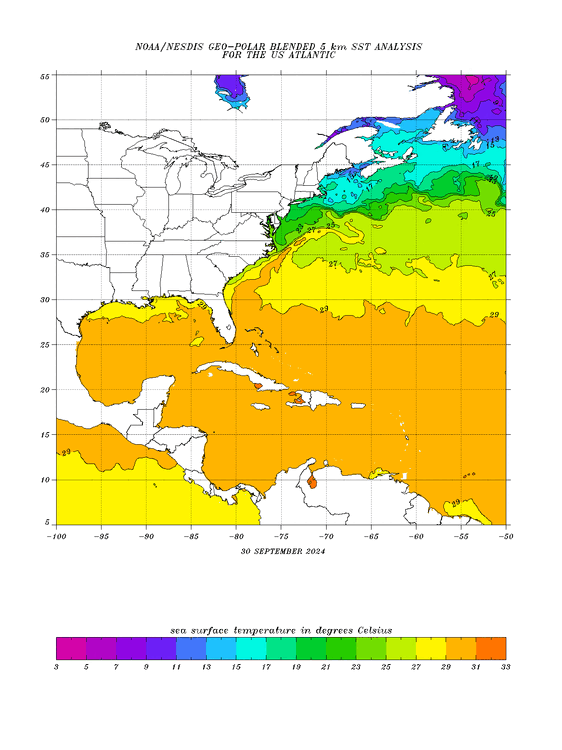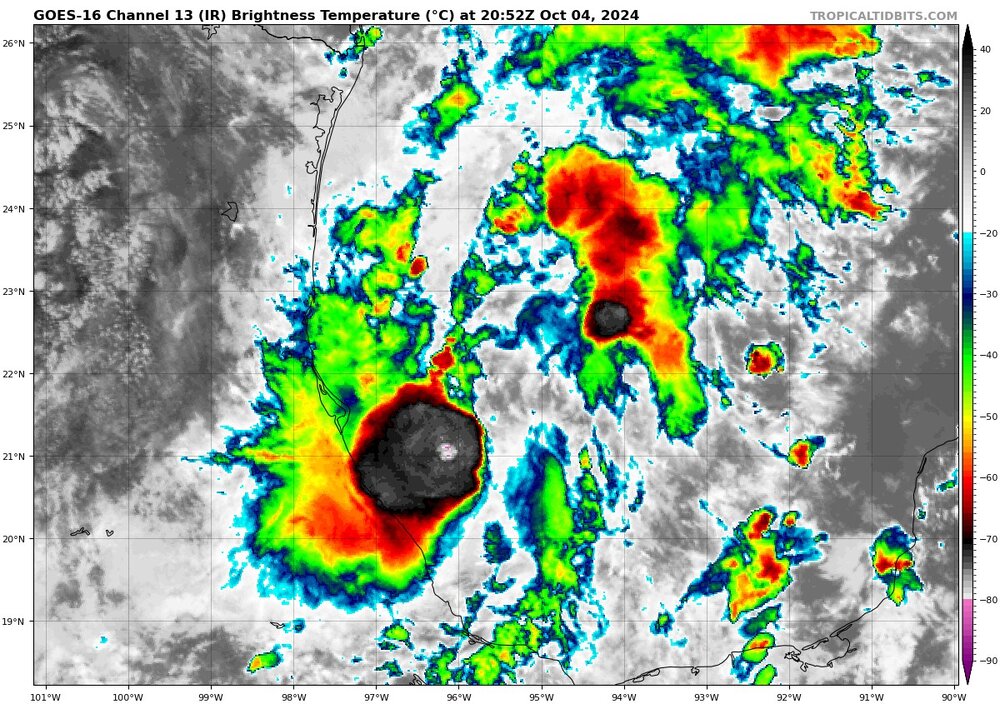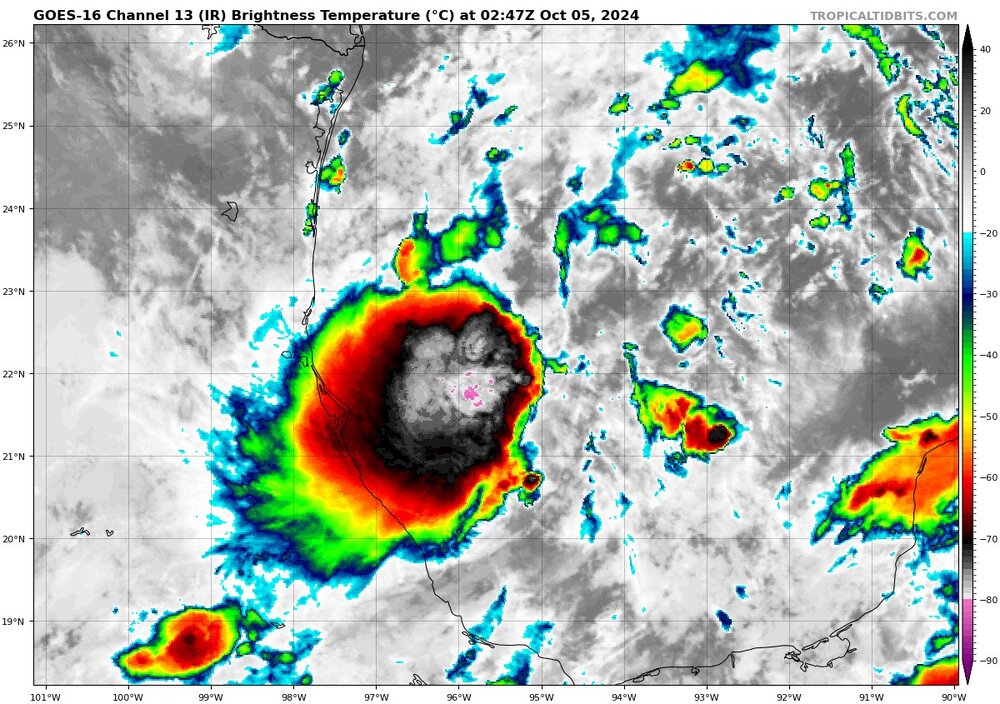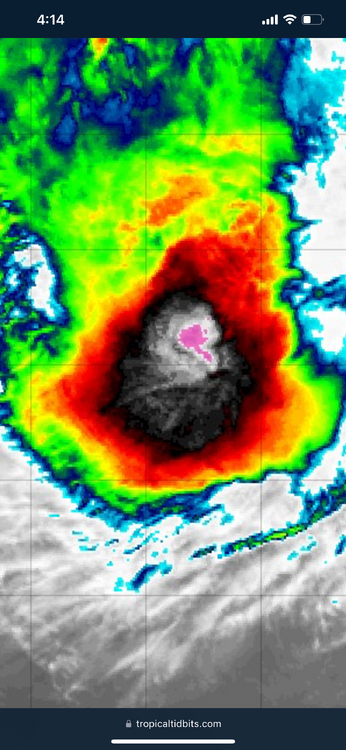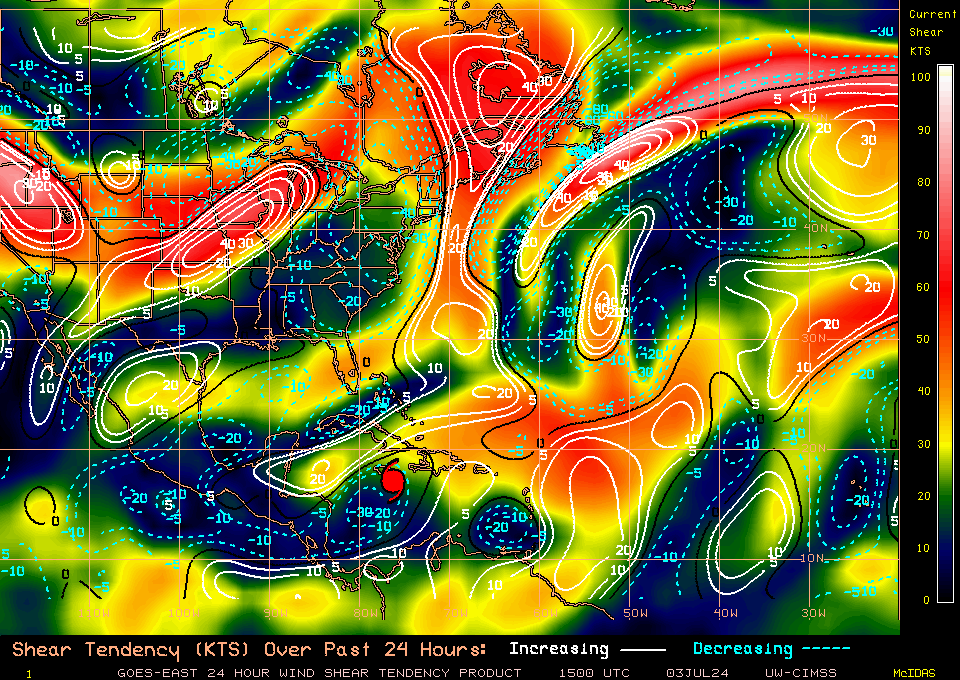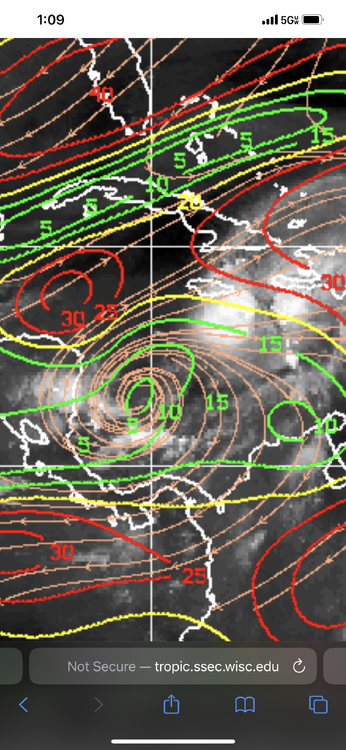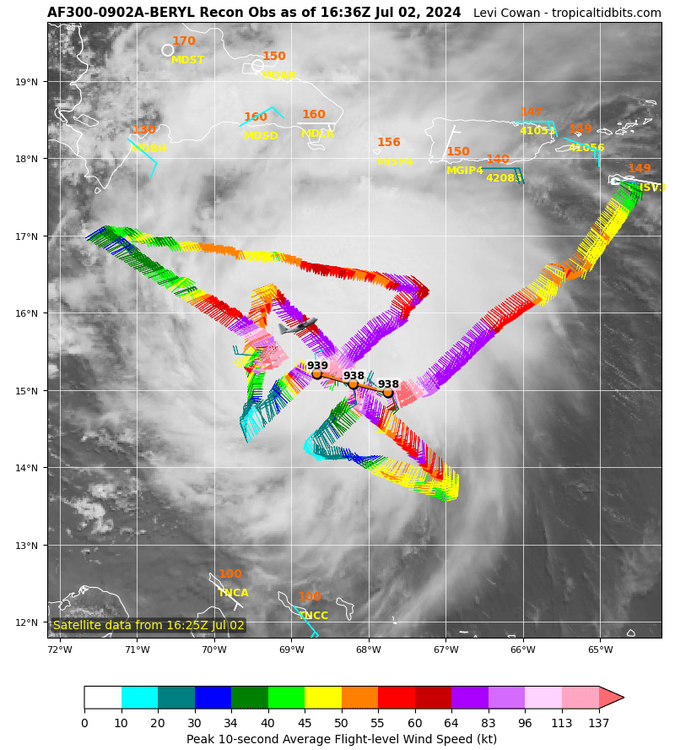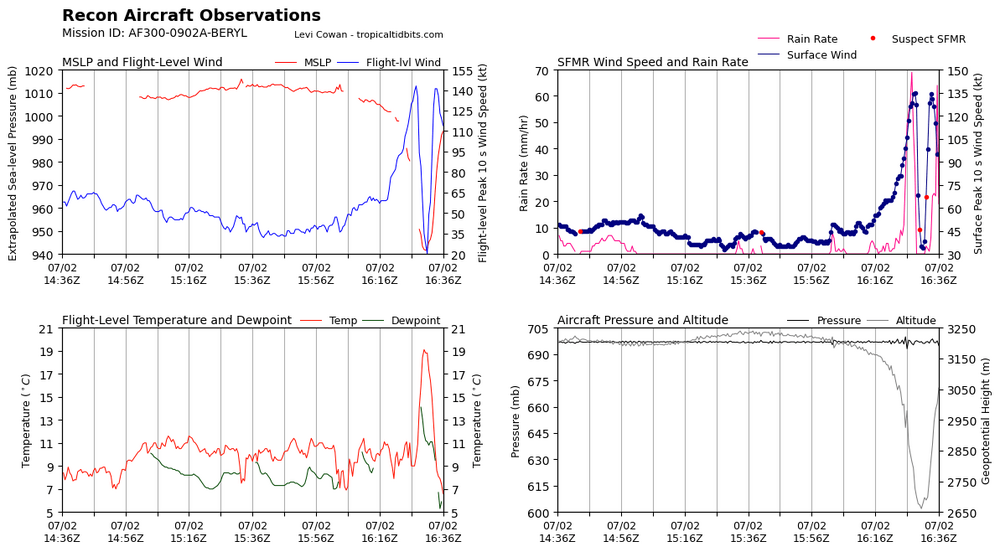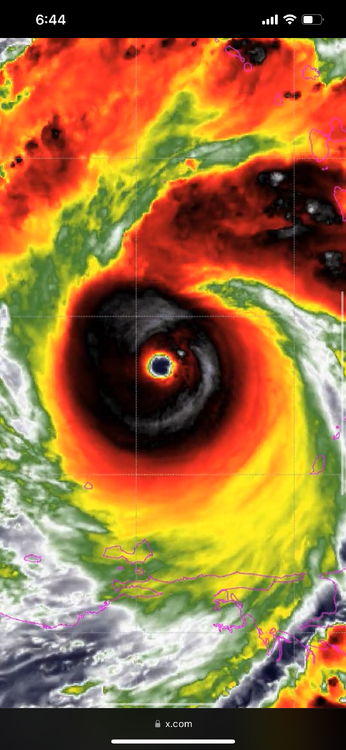-
Posts
561 -
Joined
-
Last visited
Content Type
Profiles
Blogs
Forums
American Weather
Media Demo
Store
Gallery
Everything posted by WxSynopsisDavid
-
This reminds me a lot of what happened with Katrina. It hit that Gulf Loop Current and exploded into a Category 5. Someone mentioned in a previous post that the jet pattern at landfall could mitigate wind damage. Remember that Katrina was knocked down from a Cat 5 to Cat 3 at landfall due to an EWRC. It was likely induced because of the increasing shear at landfall. With that said, this could potentially be another historic storm surge scenario. By the time it landfalls, even if it weakens slightly, the surge is already piled up at that point and pushing into the coast.
-
Usually this is their stair step approach to introducing high-end intensity into their forecast. Not good to have a Category 3 hurricane moving over the Gulf Loop Current.
-
Track scenarios are split: north of Tampa Bay or right over Ft. Myers. Both tracks would be devastating with catastrophic storm surge. Saving grace would be an eyewall replacement cycle but in actual reality that wouldn’t help much. Environment supports Milton landfalling at peak intensity. To complicate matters, the critical angle of approach to compound the storm surge threat.
-
Very concerning that Regional Hurricane Models slow Milton down over the Gulf Loop Current. Rapid to Explosive Intensification happens as Milton begins to interact with the loop current. Just not a great track to see heading into SW FL highest population center.
-
-
This thing is taking off now. 6hrs ago this thing was a blip. Now this system is looking like a strong Tropical Storm.
-
You consistently answer your own questions. The reason for the underwhelming appearance is the lack of recording stations and the fact chasers were not positioned to receive max winds. The area of max winds bypassed chaser positions. This is more in relation to that chasers were positioned for safety, NOT to be in the max winds. Max winds were on east side of eye where max storm surge is occurring. The combination of the two is an unsurvivable situation. But this is a common theme we see, year after year, going back to Harvey in 2017 with people saying these major canes look underwhelming.
-
The peak winds went east of those who were streaming. Reason why we don’t see confirmation of the 140mph winds in any of the video we have seen.
-
They most likely did, but Recon Hunters just didn’t find the exact location in the east/northeast eyewall.
-
Mesovortices rotating around the eye. Indicator of additional strengthening
-
Absolutely agree, 150-155 at LF.
-
Radar attenuation. Those towers are very large and blocking view of the west and south side of the storm. Reason why the intensification is surprising to you because you didn’t account for such.
-
Mind you, this Rapid Intensification process was friction induced. People often forget about the critical angle of approach and how the Florida west coast often induces frictional RI processes on approach.
-
I been rather quiet with this storm, but it was humorous to see all the trolls posting how Helene was struggling. Or the post in particular saying the ceiling was Cat 2 and it would be a 100-105mph cane. With that said, 150mph-155mph appears to be the ceiling now. Helene has the potential to achieve its actual peak on landfall.
-
Not much to say other than to post the infrared loop. Still images can be deceiving, an animated loop is more precise. As we can see, when Beryls appearance looks ragged, Beryl explodes in the next frame. Beryl does not show any significant signs of weakening. That deep convection upshear in the north eyewall with a recent spike of lightning activity says otherwise.
-
The fact it achieved this intensity so rapidly in an environment that wasn’t exactly pristine is all the more impressive. Other canes have had environments more conductive and failed to take advantage of the opportunity. Beryl more than achieved its peak. Really have to credit the high pressure overhead Beryl that aided in ventilation at the perfect time, right when diurnal max was peak.

